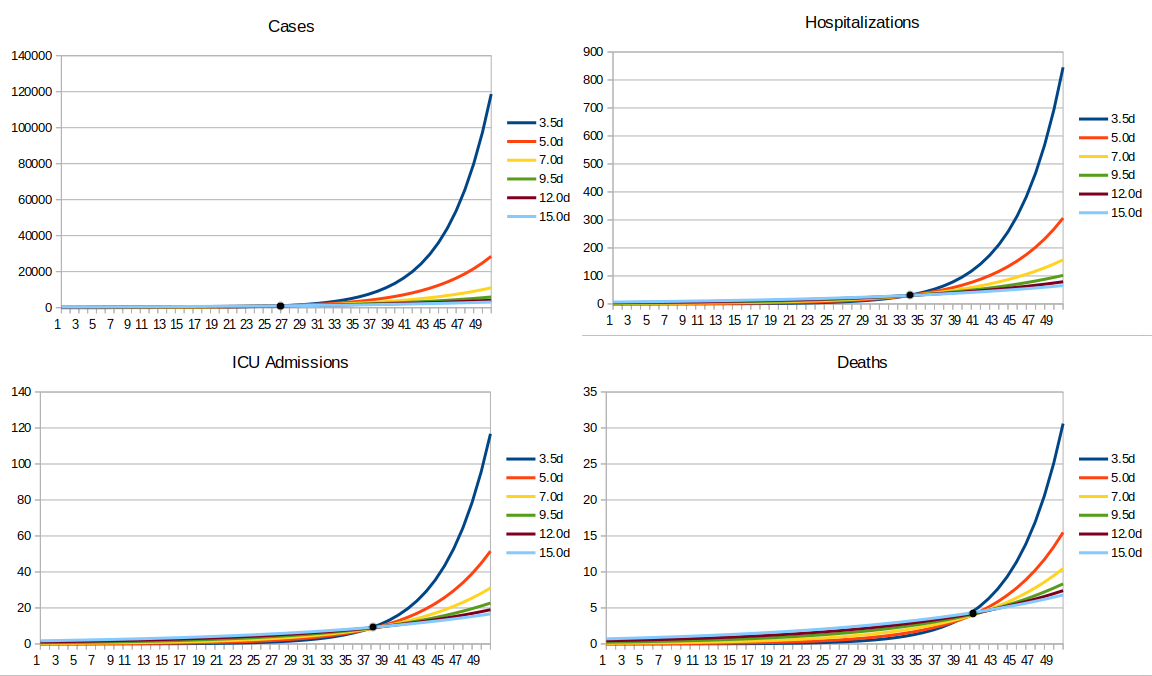
Finally found it!
pure.ed.ac.uk/ws/portalfiles…
Top line results:
* 35% as severe as Delta (which was in turn ~200x that of Wuhan-Hu-1) - in contrast with 95% as severe in the Imperial College report.
* 10x greater risk of reinfection than with Delta
* Boosters give 57%...
pure.ed.ac.uk/ws/portalfiles…
Top line results:
* 35% as severe as Delta (which was in turn ~200x that of Wuhan-Hu-1) - in contrast with 95% as severe in the Imperial College report.
* 10x greater risk of reinfection than with Delta
* Boosters give 57%...
... protection against symptomatic infection.
The nuance:
* Age *is* controlled for. This is important, as 49% of Omicron cases were age 20-39.
* Vaccination status is controlled for, but past infection is not.
* Small sample size (15 hospitalized patients)
The nuance:
* Age *is* controlled for. This is important, as 49% of Omicron cases were age 20-39.
* Vaccination status is controlled for, but past infection is not.
* Small sample size (15 hospitalized patients)
* They *do* appear to control for time bias with a Cox proportional hazards regression model.
* "Only individuals reporting symptoms at the time of test were included in this study" - Not sure why they're doing this, sounds like a good way to introduce bias.
* "Only individuals reporting symptoms at the time of test were included in this study" - Not sure why they're doing this, sounds like a good way to introduce bias.
* The comorbidities controls look decent, and they do further break them down by age as well, although only into two very broad groups (16-49 and 50+), so they sort of Simpsons Paradox it. But the main control for the risk associated with age itself is based on a spline (good).
* Sensitivity analyses: if the study is limited to only people with at least 7 days followup since diagnosis, the results stay about the same (33% the risk of Delta). If limited to 20-59yos, the risk increases significantly to 44%, but with overlapping confidence intervals.
* Limitations include using S-gene negative tests as a proxy for Omicron and S-gene positive for Delta. Not a big limitation, though. They also can't verify that all hospitalizations post-infection were due to COVID, but account for it by proxy.
* Another limitation is that their model assumes the same delay between infection and hospitalization. If this changes, then it alters the associated risk of Omicron fairly significantly.
Overall:
It looks like a good study, dealing with the challenge of limited data...
Overall:
It looks like a good study, dealing with the challenge of limited data...
... over very limited timeframes. I'd say it even looks better controlled than the Imperial College study (which was in turn better controlled than the Danish report), though they're both important datapoints. If this 1/3rd risk holds then Omicron is about 70% the risk of...
the original Wuhan-Hu-1 strain, before controlling for vaccination and past infection status.
The main risk with Omicron, as explicitly noted in the document, is the high case growth rate and high percentage of the population that is vulnerable, ...
The main risk with Omicron, as explicitly noted in the document, is the high case growth rate and high percentage of the population that is vulnerable, ...
... leading to the risk of swamping the medical system even if the strain is less severe than Delta.
Not discussed or investigated: Delta is still circulating widely, and it's not clear what protection Omicron infection gives against Delta (given that the inverse is "little")
Not discussed or investigated: Delta is still circulating widely, and it's not clear what protection Omicron infection gives against Delta (given that the inverse is "little")
• • •
Missing some Tweet in this thread? You can try to
force a refresh








